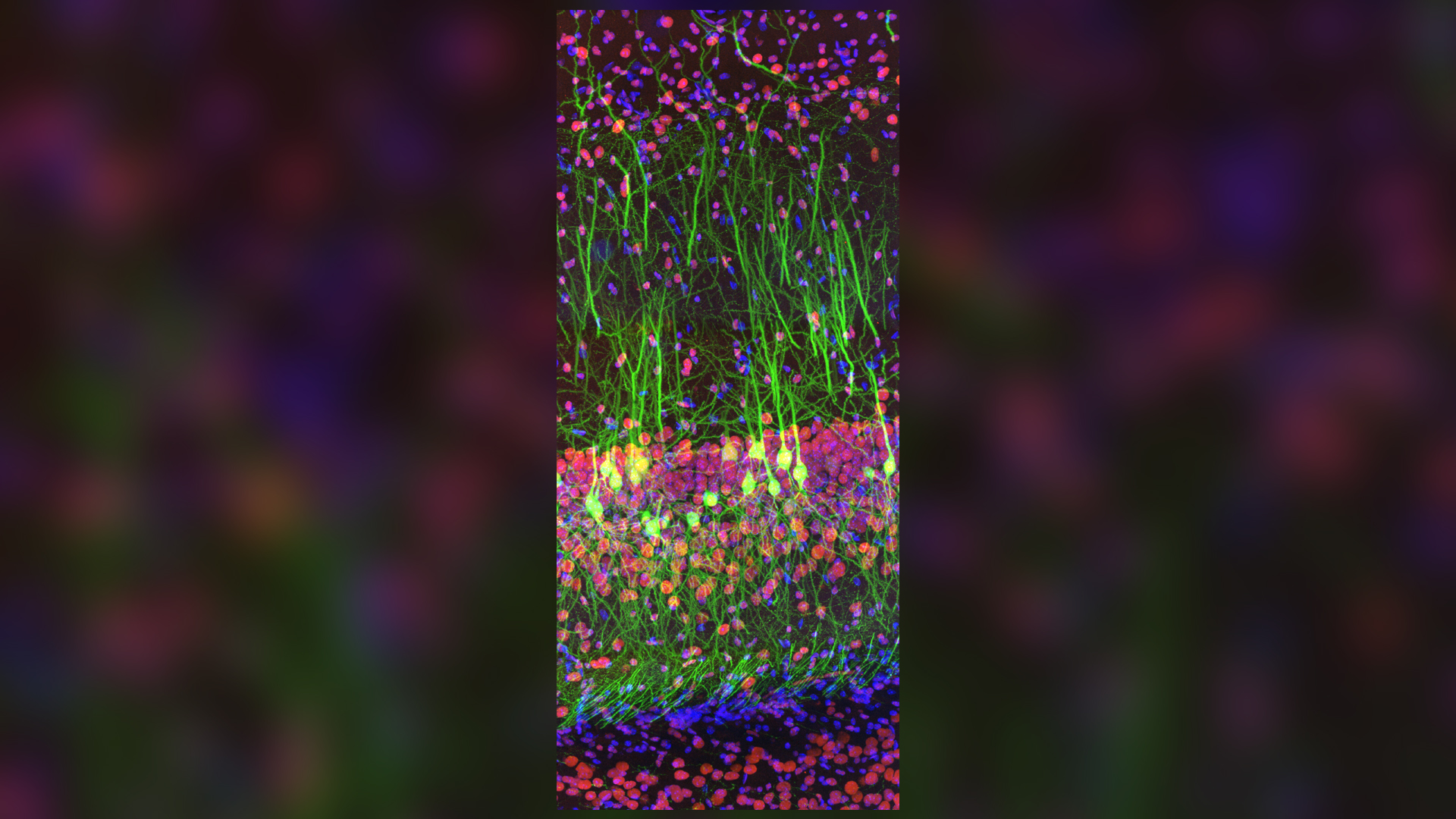'Disco' tardigrade parties under microscope, wins international photo prize
This fluorescent-stained image is to dye for

An image of a tardigrade with a psychedelic light show in its guts took home a top prize in an international photo competition. Inside the microscopic and endearingly tubby "water bear," tiny internal and external structures are illuminated in brilliant fluorescent colors that glow like a disco dance floor.
The photo was captured by Tagide deCarvalho, manager of the Keith Porter Imaging Facility (KPIF) at the University of Maryland, Baltimore County, and it was a regional winner in the 2019 Olympus Image of the Year Award, contest representatives said in a statement.
Every year, the competition awards "the best in life science imaging worldwide," celebrating images that combine visual impact and artistic beauty while also demonstrating the photographer's proficiency with microscopy, according to the statement.
Related: Magnificent microphotography: 50 tiny wonders
"I knew the moment I saw this colorful specimen that it was going to be a remarkable image," deCarvalho said. "I love sharing the fascinating things I see in the microscope with other people."
Peer at a tardigrade through a microscope and you won't see much color, as these tiny creatures are mostly transparent. However, multiple fluorescent stains helped deCarvalho create an image that was not only infused with color, but also highlighted the tardigrade's organs, she said in a statement.
"I'm excited about this image because the fluorescent dyes I used allow you to see the tardigrade digestive tract, including the mouthparts and stomach filled with food," she explained.
Get the world’s most fascinating discoveries delivered straight to your inbox.
While the tardigrade took home the top regional prize for the Americas, the contest's pick for Global Image of the Year went to an image that was even more colorful: a fluorescent-stained photo of a mouse brain slice, captured by Ainara Pintor, a doctoral candidate in biomedicine and molecular biology at the Basque Center for Biophysics in Spain.

"There are over 70 million neurons in a mouse brain," Pintor said in a statement. "This is an example of what we can observe in the hippocampus of a single brain slice." In the image, neurons are green, cell nuclei show up as blue, and fat-associated proteins are red, according to a photo description.
Other winning images of the year portray: a wasp's ovary and eggs; crystals in a beetle's wing case; fluorescent flower buds; and a magnified view of a green opal that resembles an aerial perspective of ocean waves crashing on a rocky coastline.
You can see all of the winners on the Olympus Image of the Year 2019 website.
- Tiny life revealed in stunning microscope photos
- Award-winning microscope images
- Amazing look at fruit fly eye (photo)
Originally published on Live Science.
OFFER: Save 45% on 'How It Works' 'All About Space' and 'All About History'!
For a limited time, you can take out a digital subscription to any of our best-selling science magazines for just $2.38 per month, or 45% off the standard price for the first three months.

Mindy Weisberger is a science journalist and author of "Rise of the Zombie Bugs: The Surprising Science of Parasitic Mind-Control" (Hopkins Press). She formerly edited for Scholastic and was a channel editor and senior writer for Live Science. She has reported on general science, covering climate change, paleontology, biology and space. Mindy studied film at Columbia University; prior to LS, she produced, wrote and directed media for the American Museum of Natural History in NYC. Her videos about dinosaurs, astrophysics, biodiversity and evolution appear in museums and science centers worldwide, earning awards such as the CINE Golden Eagle and the Communicator Award of Excellence. Her writing has also appeared in Scientific American, The Washington Post, How It Works Magazine and CNN.



